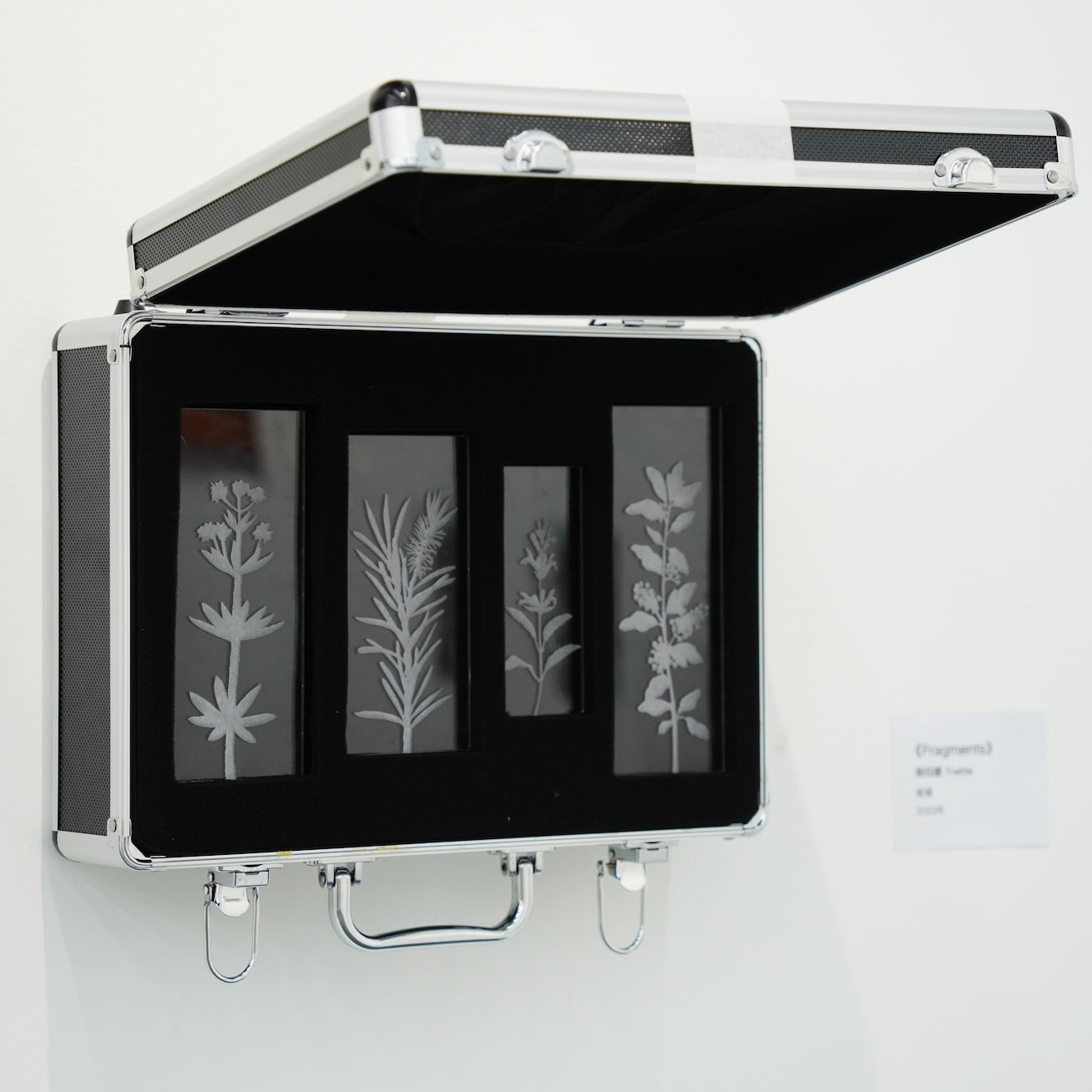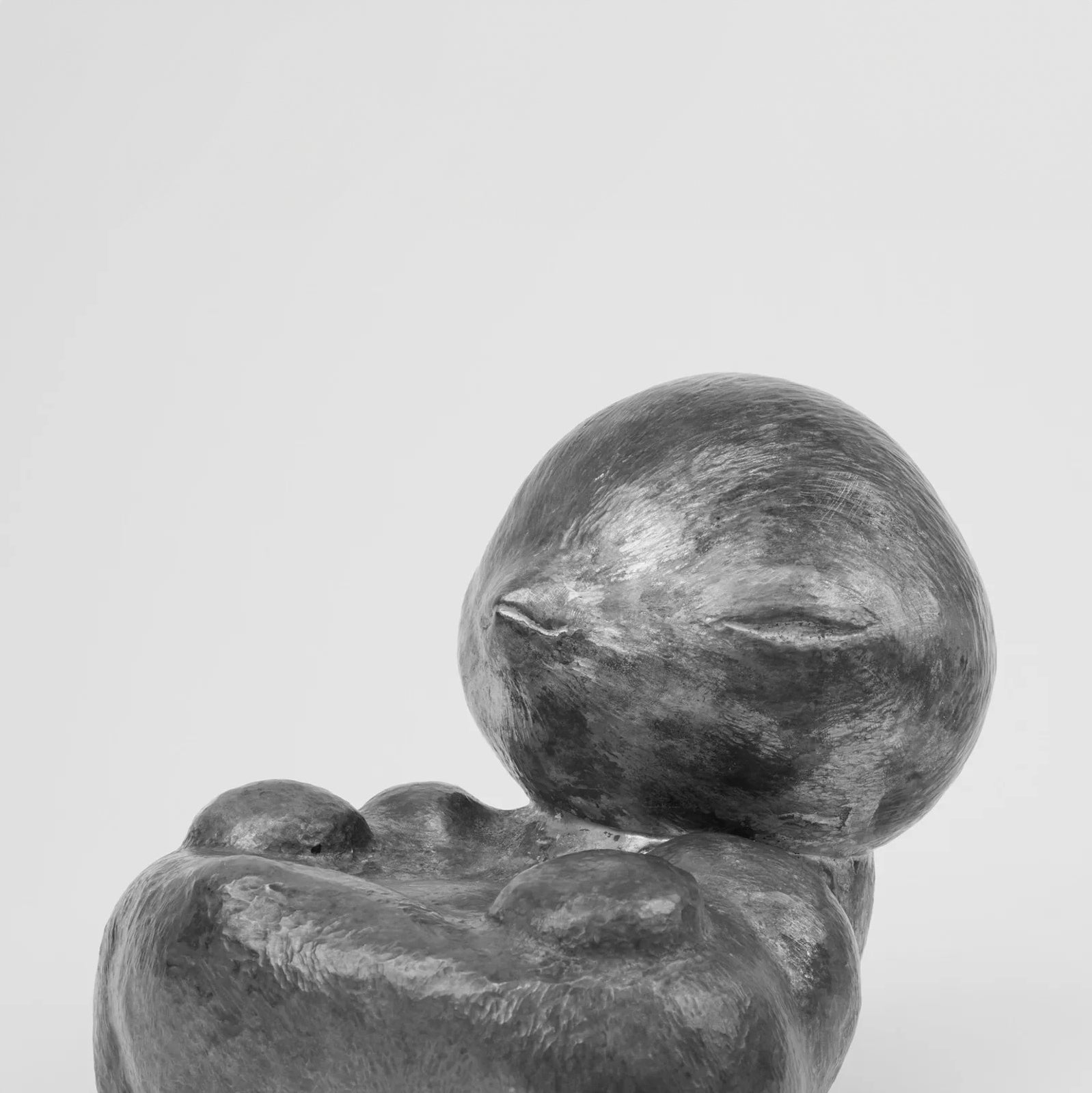What inspired your transition from animation to 3D installation? How has your background influenced your artistic practice?
Honestly, the transition from animation to 3D installation didn't feel jarring to me because at my core, I'm a storyteller. The themes I want to explore and express haven't really changed—I've always been fascinated by the relationship between humans and nature, and that was the central focus of my graduation work as well.
The shift from 2D to 3D happened because I felt that 2D media could no longer fully carry my narrative ambitions. I wanted to continue exploring in a more "materialized" world. As for how my background influences my practice, I think I'm more focused on the storytelling itself rather than being tied to any particular medium. Since I don't come from a traditional sculpture background, I'm actually less constrained by medium-specific limitations.

Fragments
What inspires your work? How does everyday life influence your creative process?
The core themes of my work stem from two related psychological concepts: Richard Louv's "Nature Deficit Disorder" from his 2005 book "Last Child in the Woods," and Francis Weller's concept of "Ecological Grief" discussed in "The Wild Edge of Sorrow."
Louv observed that modern people develop various physical and mental health issues due to reduced contact with natural environments. I believe this phenomenon reflects a deeper existential problem: our genome shares over 99.9% similarity with our ancestors from 10,000 years ago. This means our brains, nervous systems, and hormonal patterns are essentially still designed for hunter-gatherer life, yet we actually live in environments composed of artificial lighting, digital screens, and urban noise.
This fundamental misalignment creates an ineffable sense of loss.
Drawing on Weller's theoretical framework of "collective, intergenerational grief," I feel there's a paradox in modern society: although disconnection from nature causes substantial psychological impact, because modern life is taken for granted, we rarely recognize this loss, and we're never allowed to grieve this fundamental separation.
This unacknowledged loss creates a repressed and contradictory emotional state—this is precisely what my work seeks to explore: the collective, intergenerational grief arising from our disconnection with nature.

Quiet Sounds
Do you work intuitively or do you plan extensively before creating?
I think it depends on the nature of the project. For my previous work "Quiet Sound," which dealt with species co-extinction in East Asia due to human migration, I conducted extensive research over a considerable period. Many species—plants and insects—had so few specimens that they became extinct without leaving any samples, making the entire creative process quite challenging. When creating the "Fragments" series, there were fewer constraints, so the creative process was much more flexible.

Fragments
What draws you to your chosen medium/materials?
Glass itself is a paradoxical existence. All the materials used to make it originate from nature, yet in popular perception, it's considered extremely industrial. I feel this contradiction perfectly highlights the themes I want to explore.
What challenges do you face working with your chosen materials?
I think the biggest challenge is actually the scarcity of learning resources. Unlike fine art media such as oil painting, or more practical techniques like metalworking, glass work suffers from being too "industrial," which has led to rather monotonous precedents. Mainstream techniques are still limited to glassblowing and lampworking, and people's exploration of glass as an art form remains relatively sparse.
Meanwhile, there seems to be some stereotype in mainstream discourse about creation methods with strong "craft" associations, as if the more functional an object becomes, the more its artistic value diminishes. Consequently, common glass works in the market are more often defined as "crafts" rather than “artworks."

Fragments
What advice would you give to emerging artists in your field?
Completion is more important than perfection.
Since I'm personally a perfectionist, when I was doing 2D work, the high controllability meant I never encountered this kind of struggle. But entering a new field, you discover there are many uncontrollable factors. So even when unexpected situations arise, you need to learn to adjust your mindset. As my teacher once told me—"you need to learn to kill your darlings." You have to learn to let go of parts that need to be abandoned.
What are your goals for the next phase of your artistic practice?
I want to continue learning glass-related knowledge and new techniques. I feel like my current work is still "work on glass" rather than "work with glass," so I hope to study further in the future. I also want to re-navigate my themes—so far I've been exploring the existential anxiety of humans in human-nature relationships, but the settings have been more nature-oriented. Moving forward, I want to focus better on the industrialized aspects.
✦
2025 Update: New Work by Yvette Yujie Yang
This section was added in 2025 to reflect the artist’s recent work.
Continuing her exploration of ecological grief and post-industrial alienation, Yvette Yujie Yang’s newest work Caerulea challenges the perspective"We live in a culture that treats sensitivity like a design flaw", exploring the duality between vulnerability and resilience that shapes our understanding of human emotional capacity.

Caerulea
Glass serves as the perfect metaphor—a material that withstands enormous pressure while remaining fundamentally delicate. By crystallizing the ephemeral blue flame within the medium, the work reconceptualizes resilience entirely. Rather than measuring strength by our ability to remain unaffected, Caerulea suggests that true power lies in embracing our vulnerabilities as sources of connection and growth, transforming what we perceive as limitations into profound capacities for authentic human experience.



Leave a comment
This site is protected by hCaptcha and the hCaptcha Privacy Policy and Terms of Service apply.